Curious about what you have?
We offer assistance with identifying human artifacts and cultural artifacts from Iowa. Fees may be required to assess or identify larger collections. Use the decision tree below to help determine that OSA has the expertise to identify your object. If you email us, please include a scale in your photo. Also note, we are not specialists in the identification of fossils or geological specimens.
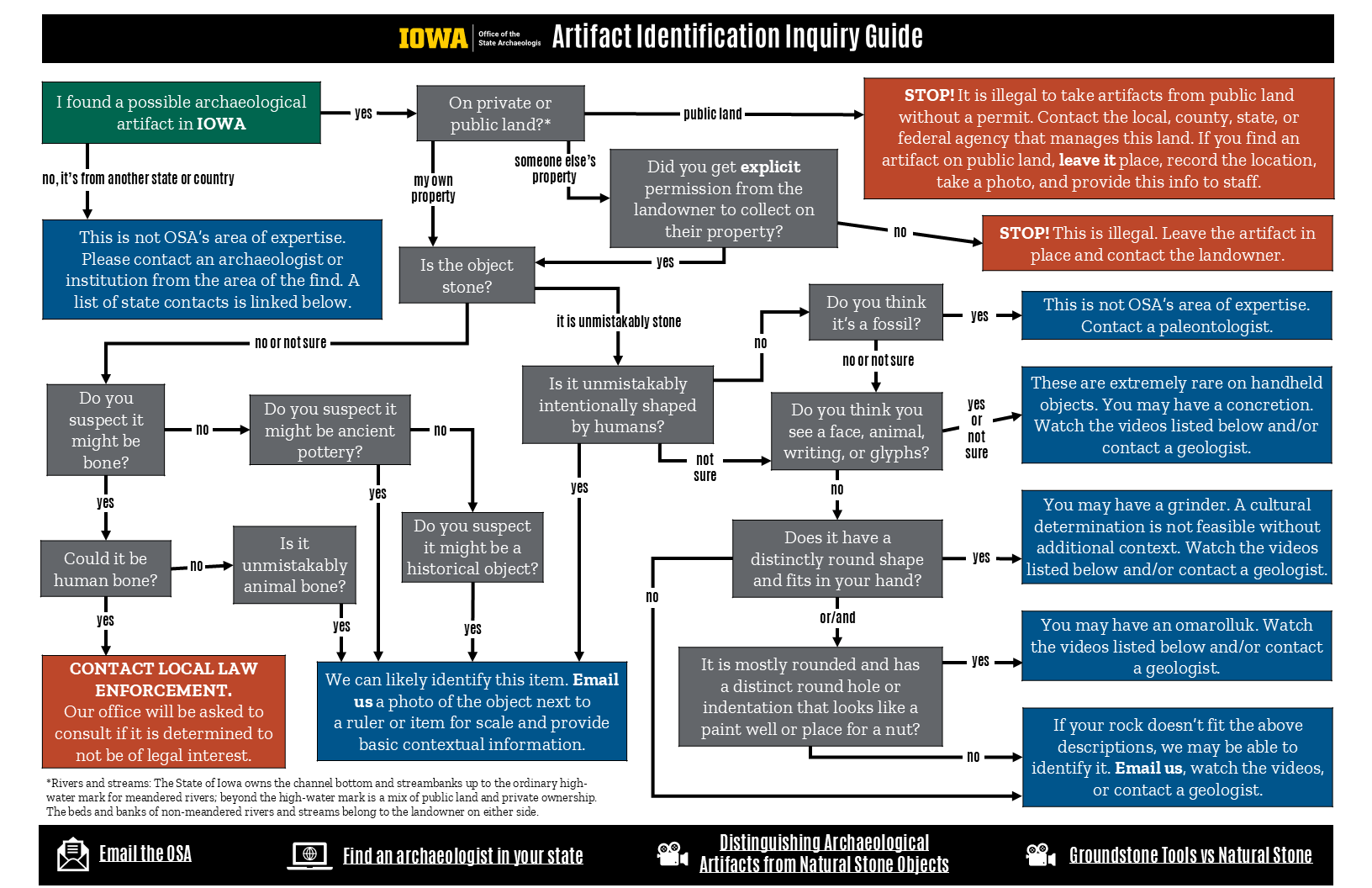
Screen reader compatible decision tree text
Start of decision tree
- I found an artifact, site, or fossil in IOWA.
• If NO, IT’S FROM ANOTHER STATE OR COUNTRY go to Step 2.
• If YES, go to Step 3. - This is not OSA’s area of expertise. Please contact an archaeologist or institution from the area of the find. A list of state contacts is linked below. [end of decision tree]
- On private or public land?*
• If PUBLIC LAND, go to Step 4.
• If SOMEONE ELSE’S PROPERTY, go to Step 5.
• If MY OWN PROPERTY, go to Step 7. - STOP! It is illegal to take artifacts from public land without a permit. Contact the local, county, state, or federal agency that manages this land. If you find an artifact on public land, leave it place, record the location, take a photo, and provide this info to staff. [end of decision tree]
- Did you get explicit permission from the landowner to collect on their property?
• If NO, go to Step 6.
• If YES, go to Step 7. - STOP! This is illegal. Leave the artifact in place and contact the landowner. [end of decision tree]
- Is the object stone?
• If IT IS UNMISTAKABLY STONE, go to Step 8.
• If NOT SURE, go to Step 11.
• If YES, go to Step 24. - Is it unmistakably intentionally shaped by humans?
• If YES, go to Step 10.• If NO OR NOT SURE, go to Step 11. - Do you think it’s a fossil?
• If YES, go to Step 10.
• If NO OR NOT SURE, go to Step 11. - This is not OSA’s area of expertise. Contact a paleontologist. [end of decision tree]
- Do you think you see a face, animal, writing, or glyphs?
• If YES OR NOT SURE, go to Step 12.
• If NO, go to Step 13. - These are extremely rare on handheld objects. You may have a concretion. Watch the videos listed below and/or contact a geologist.
- Does it have a distinctly round shape and fits in your hand?
• If YES, go to Step 14.
• If OR/AND, go to Step 15.
• If NO, go to Step 17. - You may have a grinder. A cultural determination is not feasible without additional context. Watch the videos listed below and/or contact a geologist. [end of decision tree]
- It is mostly rounded and has a distinct round hole or indentation that looks like a paint well or place for a nut?
• If YES, go to Step 16.
• If NO, go to Step 17. - You may have an omarolluk. Watch the videos listed below and/or contact a geologist. [end of decision tree]
- If your rock doesn’t fit the above descriptions, we may be able to identify it. Email us, watch the videos, or contact a geologist. [end of decision tree]
- Do you suspect it might be bone?
• If YES, go to Step 19.
• If NO, go to Step 22. - Could it be human bone?
• If YES, go to Step 20.
• If NO, go to Step 21. - CONTACT LOCAL LAW ENFORCEMENT. Our office will be asked to consult if it is determined to not be of legal interest. [end of decision tree]
- Is it unmistakably animal bone?
• If YES, go to Step 24. - Do you suspect it might be ancient pottery?
• If NO, go to Step 23.
• If YES, go to Step 24. - Do you suspect it might be a historical object?
• If YES, go to Step 24. - We can likely identify this item. Email us a photo of the object next to a ruler or item for scale and provide basic contextual information. [end of decision tree]
*Rivers and streams: The State of Iowa owns the channel bottom and streambanks up to the ordinary high-water mark for meandered rivers; beyond the high-water mark is a mix of public land and private ownership. The beds and banks of non-meandered rivers and streams belong to the landowner on either side.
Email the OSA: osa@uiowa.edu
Find an archaeologist in your state: https://saa.org/about-archaeology/get-involved-locally
Video: Distinguishing Archaeological Artifacts from Natural Stone Objects
Video: Groundstone Tools vs Natural Stone
Iowa Artifact ID Resources
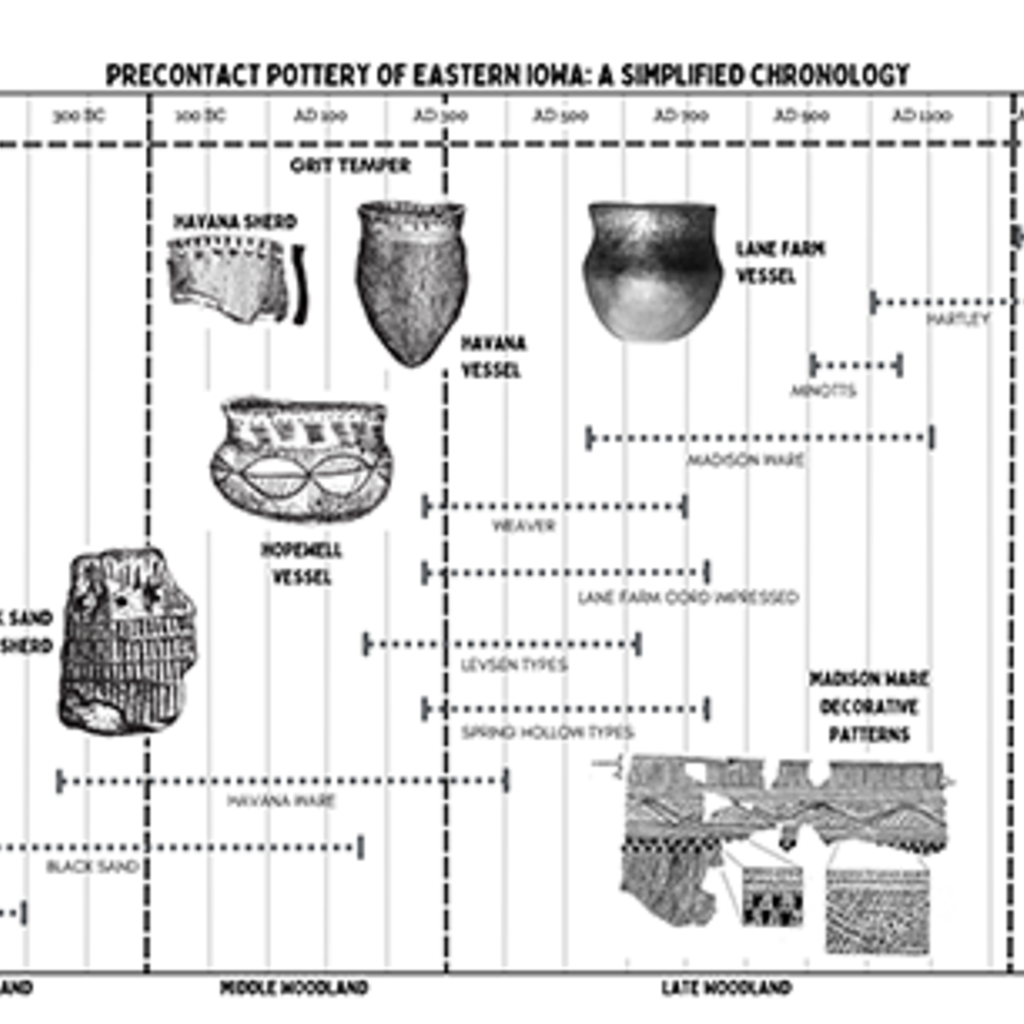
A Citizen’s Guide to Recording Archaeological Finds in Iowa
An ArcGIS StoryMap with resources to assist non-archaeologists with basic artifact identification, site documentation, artifact collection, and collections care.
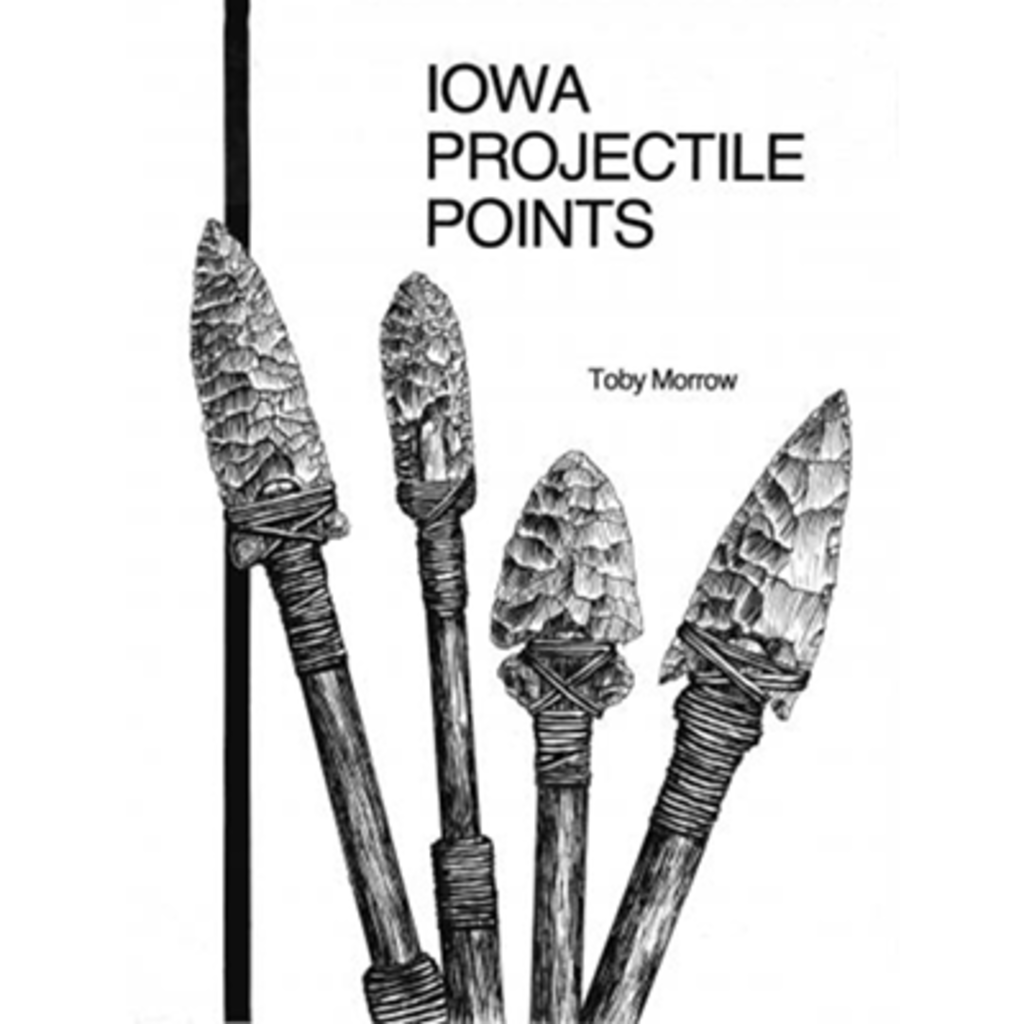
Iowa Projectile Points
Written and illustrated by Toby Morrow, this OSA Special Publication is available as a PDF download. All proceeds support OSA and our statewide outreach.
"Iowa Projectile Points is designed as a guide to assist with the identification of projectile point types commonly found in the state of Iowa. It is organized by general typological forms with the attributes considered for identification carefully described. The descriptions accompanied by Morrow's detailed line drawings make the guide easy to use."
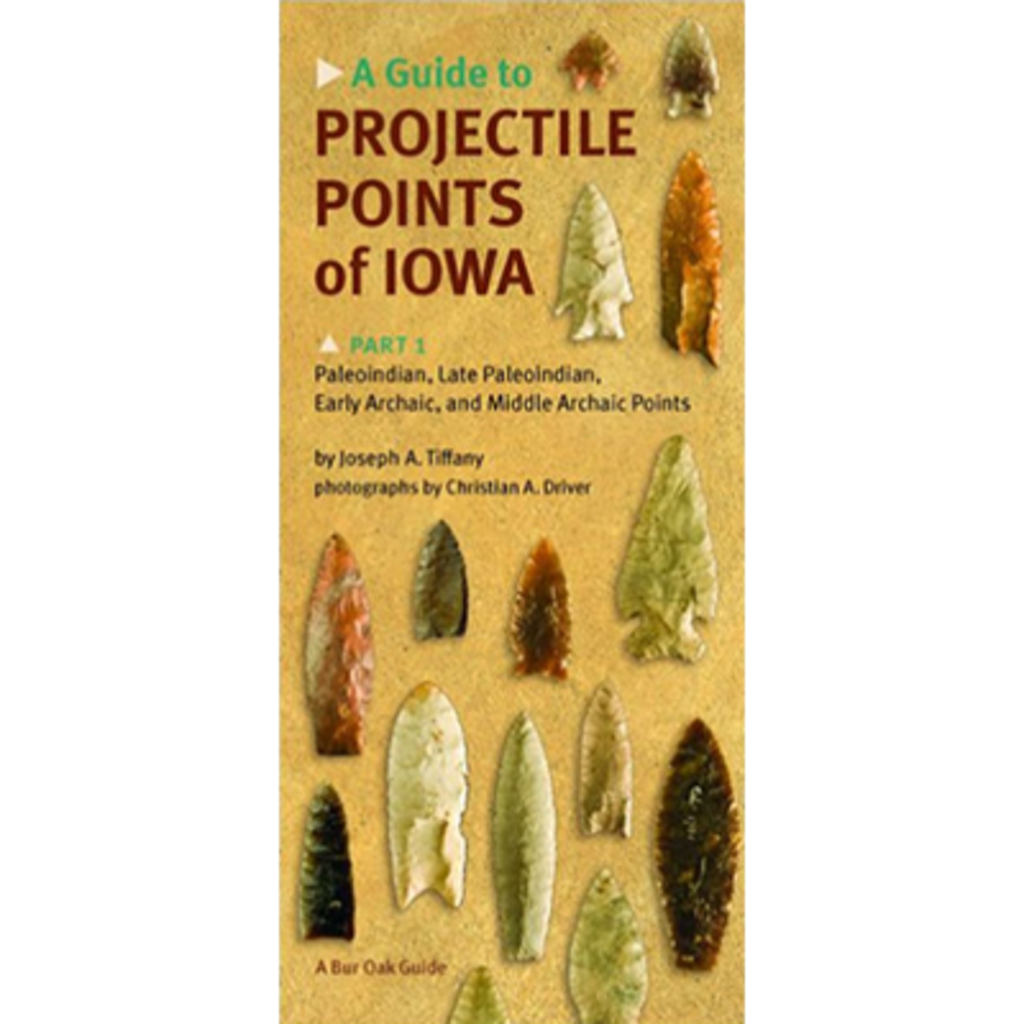
A Guide to Projectile Points of Iowa Part 1
Compiled by Joe Tiffany, this laminated fold-out guide illustrates and describes Iowa projectile points from the Paleoindian, Late Paleoindian, Early Archaic, and Middle Archaic archaeological time periods.
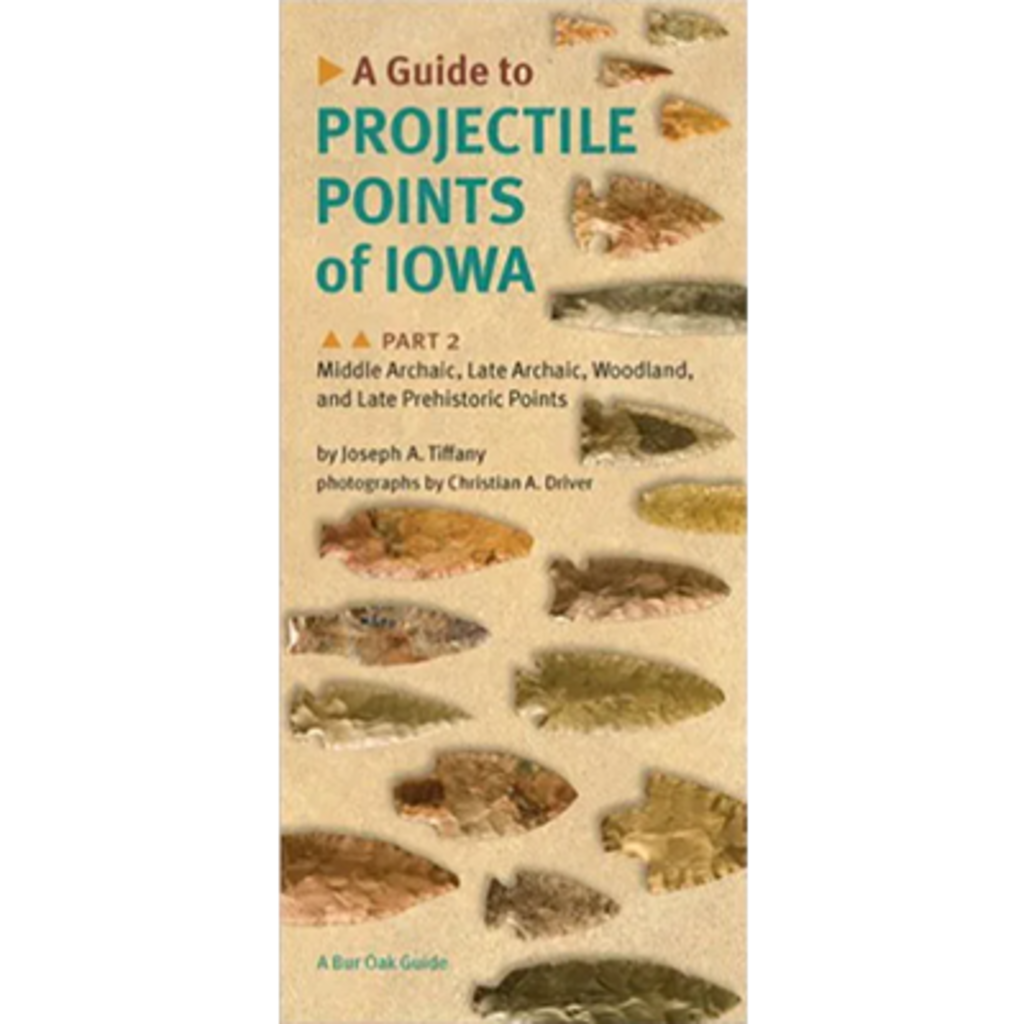
A Guide to Projectile Points of Iowa Part 2
Compiled by Joe Tiffany, this laminated fold-out guide illustrates and describes Iowa projectile points from the Middle Archaic, Late Archaic, Woodland, and Late Prehistoric archaeological time periods.